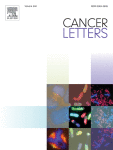Extracellular adenosine promotes cell migration/invasion of Glioblastoma Stem-like Cells through A3 Adenosine Receptor activation under hypoxia.
Cancer Lett. 2019 Apr 1;446:112-122. doi: 10.1016/j.canlet.2019.01.004. Epub 2019 Jan 18.
Torres Á1, Erices JI1, Sanchez F2, Ehrenfeld P3, Turchi L4, Virolle T4, Uribe D1, Niechi I1, Spichiger C1, Rocha JD1, Ramirez M5, Salazar-Onfray F6, San Martín R1, Quezada C7.
Author information
1 Laboratorio de Patología Molecular, Instituto de Bioquímica y Microbiología, Facultad de Ciencias, Universidad Austral de Chile, Valdivia, Chile.
2 Instituto de Inmunología, Universidad Austral de Chile, Valdivia, Chile.
3 Laboratorio de Patología Celular, Instituto de Anatomia, Histología y Patología, Universidad Austral de Chile, Valdivia, Chile; Université Côte d’Azur, Nice, F-06108, France.
4 Université Côte d’Azur, Nice, F-06108, France; CNRS, UMR7277, F-06108, France; Inserm, U1091, Nice, F-06108, France.
5 Servicio de Neurocirugía, Instituto de Neurocirugía Dr. Asenjo, Santiago, Chile; Hospital Clínico Universidad de Chile, Santiago, Chile; Instituto Oncológico Fundación Arturo Lopez Perez (FALP), Santiago, Chile.
6 Instituto Milenio de Inmunología e Inmunoterapia, Facultad de Medicina, Universidad de Chile, Santiago, Chile.
7 Laboratorio de Patología Molecular, Instituto de Bioquímica y Microbiología, Facultad de Ciencias, Universidad Austral de Chile, Valdivia, Chile. Electronic address: claudiaquezada@uach.cl.
Abstract
Glioblastoma (GBM) is the brain tumor with the worst prognosis composed of a cell subpopulation called Glioblastoma Stem-like Cells (GSCs) responsible for tumor recurrence mediated by cell invasion. GSCs persist in a hypoxic microenvironment which promotes extracellular adenosine production and activation of the A3 Adenosine Receptor (A3AR), therefore, the aim of this study was to determine the role of extracellular adenosine and A3AR on GSCs invasion under hypoxia. GSCs were obtained from a U87MG cell line and primary cultures of GBM patients, and then incubated under normoxia or hypoxia. Gene expression was evaluated by RNAseq, RT-qPCR, and western blot. Cell migration was measured by spreading and transwell boyden chamber assays; cell invasion was evaluated by Matrigel-coated transwell, ex vivo brain slice, and in vivo xenograft assays. The contribution of A3AR on cell migration/invasion was evaluated using the A3AR antagonist, MRS1220. Extracellular adenosine production was higher under hypoxia than normoxia, mainly by the catalytic action of the prostatic acid phosphatase (PAP), promoting cell migration/invasion in a HIF-2-dependent process. A3AR blockade decreased cell migration/invasion and the expression of Epithelial-Mesenchymal Transition markers. In conclusion, high levels of extracellular adenosine production enhance cell migration/invasion of GSCs, through HIF-2/PAP-dependent activation of A3AR under hypoxia.
PMID: 30660649
DOI: 10.1016/j.canlet.2019.01.004

